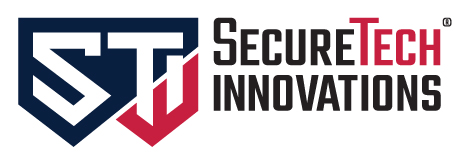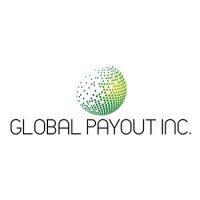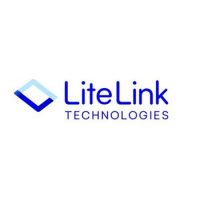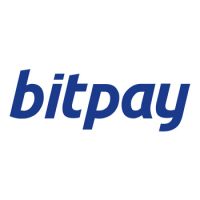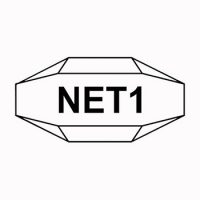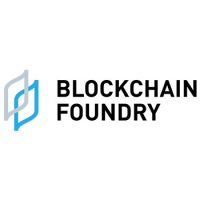Blockchain
Valdy Investments Ltd. Enters into Definitive Agreement for Proposed Qualifying Transaction with INX Limited
Vancouver, British Columbia–(Newsfile Corp. – March 31, 2021) – Valdy Investments Ltd. (TSXV: VLDY.P) (the “Company” or “Valdy”) is pleased to announce that, further to its news release of February 22, 2021, it has entered into a definitive securities exchange agreement (the “Securities Exchange Agreement”) dated March 31, 2021 with INX Limited (“INX”), a company incorporated under the laws of Gibraltar, the securityholders of INX (the “INX Securityholders”), and the Co-Lead Agents (as defined below) regarding the Company’s previously announced proposed transaction to acquire all of the issued and outstanding securities of INX (the “Transaction”). Upon completion of the Transaction, INX will become a wholly-owned subsidiary of the Company, and the combined entity (the “Resulting Issuer”) will continue the business of INX.
The Transaction is intended to constitute the “Qualifying Transaction” of the Company as such term is defined in Policy 2.4 – “Capital Pool Companies” (the “Policy”) of the TSX Venture Exchange (the “Exchange”) Corporate Finance Manual.
Concurrent Financing
Further to the Company’s news release of February 22, 2021, INX expects to complete its previously announced equity financing (the “Concurrent Financing”) on April 1, 2021, by way of a private placement of up to 31,680,000 subscription receipts (each, a “Subscription Receipt”) at $1.25 per Subscription Receipt for aggregate gross proceeds of up to $39,600,000, with such proceeds being held in escrow, other than 50% of the commission and corporate finance fee payable to the Agents (as defined below). The Concurrent Financing will be comprised of a brokered portion (the “Brokered Concurrent Financing”), pursuant to which up to 22,823,400 Subscription Receipts will be issued, and a non-brokered portion (the “Non-Brokered Concurrent Financing”), pursuant to which up to 8,856,600 Subscription Receipts will be issued.
Immediately prior to the Closing and upon satisfaction of all conditions precedent to the Transaction, each Subscription Receipt will be automatically converted into a unit comprised of one ordinary share in the capital of INX (“INX Shares” and each such INX Share, an “INX Financing Share”) and one-half of one common share purchase warrant of INX (each whole warrant, an “INX Financing Warrant”), and the escrowed proceeds of the Concurrent Financing will be released to INX. Each INX Financing Warrant is exercisable into one additional INX Share for two years from closing of the Concurrent Financing at an exercise price of $1.88 per share.
Pursuant to the Brokered Concurrent Financing, a syndicate of agents led by PI Financial Corp. and Eight Capital (together, the “Co-Lead Agents”), and including Beacon Securities Limited and Cormark Securities Inc. (together with the Co-Lead Agents, the “Agents”) will be paid a cash commission equal to 6% of the gross proceeds of the Concurrent Financing, provided that a commission of 3% will be paid in respect of sales to identified investors agreed upon by INX and the Co-Lead Agents (up to a maximum of $5,000,000 of such sales) (the “President’s List Purchasers”). The Agents will also receive compensation options (the “Compensation Options”) exercisable into that number of Resulting Issuer shares as is equal to 6% of the total number of Subscription Receipts issued pursuant to the Brokered Concurrent Financing (3% in respect of Subscription Receipts issued to the President’s List Purchasers). Each Compensation Option will be exercisable at $1.25 per Resulting Issuer share for up to 24 months following closing of the Transaction. Pursuant to the Non-Brokered Concurrent Financing, the Agents will be paid a corporate finance fee equal to up to $664,245, and 531,396 finance warrants on terms equivalent to the Compensation Options.
Terms of the Transaction
Prior to the closing of the Transaction (the “Closing”), the Company will consolidate the issued and outstanding Valdy Shares (the “Consolidation”) on the basis of one (1) post-Consolidation Valdy Share for every 2.726667 pre-Consolidation Valdy Shares outstanding on a fully-diluted basis (including Finder’s Shares (as defined below)) such that immediately prior to the Closing, there shall be outstanding no more than 5,000,000 Valdy Shares on a fully-diluted basis.
The Securities Exchange Agreement provides that, on the Closing, the Company will acquire all of the issued and outstanding securities of INX from the INX Securityholders by way of a securities exchange as follows:
a) the Company will issue to the former shareholders of INX consideration of an aggregate of 175,000,000 post-Consolidation common shares in the capital of Valdy (each, a “Valdy Share” and each such Valdy Share issued as consideration, a “Valdy Consideration Share”) on a partially diluted basis, reflecting the exercise of the INX Legacy Warrants (as defined below). The Valdy Consideration Shares issued to holders of INX Financing Shares shall be issued on a 1:1 basis, and all other Valdy Consideration Shares will be issued on the basis of 10.4871348 Valdy Consideration Shares for each INX Share (the “Conversion Ratio”).
b) the holders of outstanding options to purchase INX Shares (each, an “INX Option”) shall surrender for cancellation each INX Option held by them, and for each INX Option so surrendered, Valdy shall issue to such holder an option to acquire a post-Consolidation Valdy Share (each, a “Valdy Consideration Option”) having terms equivalent to the surrendered INX Option with respect to vesting conditions and expiry date, and adjusted pursuant to the Conversion Ratio in respect of exercise price and the number of Valdy Shares issuable upon exercise thereof;
c) the holders of outstanding warrants to purchase INX Shares (each, an “INX Legacy Warrant”) shall surrender for cancellation each INX Legacy Warrant held by them, and for each INX Legacy Warrant so surrendered, Valdy shall issue to such holder an warrant to acquire post-Consolidation Valdy Shares (each, a “Valdy Consideration Warrant,” and together with the Valdy Consideration Shares and the Valdy Consideration Options, the “Valdy Consideration Securities”) having terms equivalent to the surrendered INX Legacy Warrant with respect to expiry date, and adjusted pursuant to the Conversion Ratio in respect of exercise price and the number of Valdy Shares issuable upon exercise thereof; and
d) each of the warrants to purchase INX Shares issued pursuant to the Concurrent Financing (each, an “INX Financing Warrant”) shall, in accordance with its terms, become exercisable to purchase an equivalent number of post-Consolidation Valdy Shares at the same exercise price as the INX Shares to which such warrant was previously exercisable for, and such INX Financing Warrant shall otherwise continue to be governed in accordance with its terms.
With respect to the issuance of the Valdy Consideration Securities to the INX Securityholders, the Company intends to rely on Section 2.16 of National Instrument 45-106 – Prospectus Exemptions for an exemption from the prospectus requirements under applicable securities laws. In connection with the Transaction, the Company will change its name to The INX Digital Company Inc. (the “Name Change”), or such other name as is determined by INX.
The completion of the Transaction is subject to the satisfaction of various conditions as are standard for a transaction of this nature, including but not limited to:
a) the Securities Exchange Agreement shall not have been terminated;
b) there will not be in force any order or decree restraining or enjoining the consummation of the Transaction, or any proceeding in progress or threatened, which would, if successful, result in such an order;
c) all required regulatory and third party approvals will have been received, including the conditional approval of the Exchange for the Transaction;
d) the Valdy Consideration Shares and the Valdy Consideration Warrants being freely tradeable pursuant to applicable securities laws;
e) the Company shall have completed the Consolidation and the Name Change;
f) the Concurrent Financing shall have been completed;
g) the Company shall have a minimum of $800,000 in cash, and no liabilities other than those incurred in connection with the Transaction;
h) INX not being subject to any debt obligations;
i) INX shall have no more than 175,000,000 INX Shares issued and outstanding on a fully-diluted basis, which amount shall include INX Shares issuable pursuant to any convertible securities, but excluding any commitments on INX pursuant to its employee stock option plan and any shares issuable pursuant to the Concurrent Financing;
j) completion of all matters, and the satisfaction of all conditions (unless waived in writing), under the Securities Exchange Agreement required to be completed or satisfied on or before the Closing;
k) the receipt of a favourable tax ruling from Israeli tax authorities;
l) the shareholders of Valdy shall have approved, and Valdy shall have adopted, an updated stock option plan;
m) the securityholders of INX shall have approved the Transaction, and matters ancillary thereto; and
n) no material adverse effect having occurred in respect of the Company or INX.
On Closing, the Resulting Issuer expects to enter into five year advisory agreements (each, an “Advisory Agreement”) with James Decker and Johnny Ciampi (each, an “Advisor”). Each Advisory Agreement will provide for the issuance of 1,000,000 immediately vesting options to purchase shares of the Resulting Issuer (each, an “Advisor Option”) under the Resulting Issuer’s stock option plan to the applicable Advisor, with 500,000 Advisor Options being exercisable at a price of $1.25 per share and 500,000 Advisor Options being exercisable at a price of $2.50 per share, and all Advisor Options expiring on the date that is five years from the Closing.
Upon Closing, the Resulting Issuer expects to have approximately 19,750,441 options outstanding to purchase common shares (“Resulting Issuer Options”) to eligible persons under the Resulting Issuer’s stock option plan. The Resulting Issuer expects to have approximately 5,721,885 additional Resulting Issuer Options available for issuance following Closing.
In connection with the Transaction, the Company has entered into a finder’s fee agreement with Peter Hough, pursuant to which the Company has agreed to issue 650,000 Valdy Shares (approximately 258,357 Valdy Shares on a post-Consolidation basis) (the “Finder’s Shares”) to Mr. Hough on Closing as compensation for services provided, subject to the approval of the Exchange.
Following Closing, it is expected that the Resulting Issuer will have approximately the following securities outstanding:
| Class of Securities (Source) | Undiluted Issued and Outstanding |
Fully-Diluted Issued and Outstanding |
||
| Valdy Shares (Former Valdy Security holders) | 4,248,165 | 2.2% | 4,248,165 | 1.7% |
| Valdy Options (Former Valdy Security holders) | 421,760 | 0.2% | 421,760 | 0.2% |
| Valdy Agent’s Options (Former Valdy Security holders) | 91,687 | 0.04% | 91,687 | 0.03% |
| Finder’s Shares (Finder’s Fee Agreement) | 238,386 | 0.1% | 238,386 | 0.1% |
| Valdy Consideration Shares (Former INX Shareholders) | 159,923,423 | 81.3% | 159,923,423 | 64.2% |
| Valdy Consideration Shares (Concurrent Financing) | 31,680,000 | 16.1% | 31,680,000 | 12.7% |
| Valdy Consideration Options (INX Options) | Nil | Nil | 17,750,441 | 7.1% |
| Valdy Consideration Warrants – (INX Legacy Warrants) | Nil | Nil | 15,076,577 | 6.1% |
| INX Warrants (Concurrent Financing) | Nil | Nil | 15,840,000 | 6.4% |
| Agent’s Warrants (Concurrent Financing) | Nil | Nil | 1,900,800[1] | 0.8% |
| Advisor Options (Advisory Agreements) | Nil | Nil | 2,000,000 | 0.8% |
| Total: | 196,603,421 | 100% | 249,171,239 | 100% |
About INX
INX, founded in 2017, is based out of Gibraltar and has an office in Israel. To date, INX’s operations have focused on developing blockchain-based platforms for trading digital securities and cryptocurrencies available to both institutional and retail investors in accordance with applicable regulatory requirements. INX launched the world’s first SEC registered security token IPO aimed at establishing a revolutionary, fully regulated financial trading market and becoming a prime trading and listing arena for digital assets. The Resulting Issuer, through INX, plans to bring to market a trading and listing arena for digital assets with an experienced team with demonstrated success in the industry. The INX management team and board of directors is comprised of traditional capital market veterans and blockchain experts. INX has recently entered into a definitive agreement to acquire Open Finance Securities LLC, a registered U.S broker-dealer with an alternative trading system.
The following table provides select financial information for INX:
| Year ended December 31, 2020 (audited) |
Year ended December 31, 2019 (audited) |
Year ended December 31, 2018 (audited) |
|
| (thousands of USD$) | |||
| Total Revenue | nil | nil | nil |
| Total Assets | 8,085 | 387 | 1,021 |
| Total Liabilities | 29,831 | 1,933 | 967 |
| Net Income (Loss) | (24,331) | (3,689) | (4,010) |
Additional financial information with respect to INX will be provided in the filing statement to be filed with the Exchange in connection with the Transaction.
Board of Directors, Management and Insiders
In connection with the Transaction, it is expected that James Decker, Johnny Ciampi, Jonathan McNair and Neil Currie will resign as a directors of the Company, and James Decker and Johnny Ciampi will resign as Chief Executive Officer and Chief Financial Officer of the Company, respectively.
The board of directors of the Resulting Issuer is expected to initially consist of eight directors, with seven nominees from INX and one nominee from the Company. The initial directors are expected to be Alan Silbert, James Crossley, David Weild, Nicholas Thadaney, Haim Ashar, Thomas Lewis, Rafael Rafaeli and a nominee from the Company that is acceptable to INX, acting reasonably. Executive management of the Resulting Issuer is expected to include Shy Datika as President, Oran Mordechai as Chief Financial Officer, Itai Avneri as Chief Operating Officer, Emiliano Rios Caban as Chief Compliance Officer, Douglas Borthwick as Chief Marketing and Business Development Officer, Paz Diamant as Chief Technology Officer, Maia Naor and Vice President – Product and Jonathan Azeroual as Vice President – Blockchain Asset Strategy.
Following Closing, it is expected that Shy Datika, and no other shareholder, will beneficially own or control more than 10% of the outstanding common shares of the Resulting Issuer.
Additional information about the currently known proposed directors and officers of the Resulting Issuer is provided below, and further information will be provided in the filing statement to be filed with the Exchange in connection with the Transaction.
Alan Silbert – Director
Mr. Alan Silbert is a director of INX and its Executive Managing Director. He joined INX in March 2018. Mr. Silbert is responsible for launching INX Services operations in North America, including facilitating the build-out of the director and advisor team, raising capital, growing operations and infrastructure for North American operations and leading the registration processes for broker-dealer and alternative trading system licenses. From December 2015 until March 2018, he was Senior Vice President at Capital One Commercial Banking, serving on the Asset Based Lending and Life Science Finance/Venture Debt teams. Prior to that, he was Vice President – Life Science Finance at GE Capital. From February 2013 until October 2017, he served as founder and Chief Executive Officer of BitPremier LLC, a bitcoin luxury marketplace. Mr. Silbert received his BS in Business Administration with a concentration in Finance from Towson University.
James Crossley – Director
Mr. James Crossley is a director of INX and heads INX’s European business and corporate development efforts. From October 2015 to December 2018, James was a Director of the Flo Live group, a provider of global cloud-based Internet-of-Things ecosystems. From March 2016 to May 2017, he acted as Director and CFO of Flocash Limited, a technology based international money transfer gateway. From February 2013 to December 2016 he worked with Extech, Ascarii and Intalec, marketing ERP Solutions including SAP Business One Cloud and Infor. Prior to February 2013, he had been Director of Corporate Development for Titan GS Europe, a global SAP Partner, having previously sold his own successful SAP Partnership to Titan in February 2009. Before moving into technology James, spent 25 years at C Level in the advertising industry including CFO, CEO and Group CFO roles for regional and global ad agencies.
David Weild – Director
Mr. David Weild is an independent director of INX. Mr. Weild is founder, chairman and CEO of Weild & Co., Inc., parent company of the investment banking firm Weild Capital, LLC. Prior to Weild & Co., Mr. Weild was vice chairman of NASDAQ, president of PrudentialFinancial.com and head of corporate finance and equity capital markets at Prudential Securities, Inc. Mr. Weild holds an M.B.A. from the Stern School of Business and a B.A. from Wesleyan University. Mr. Weild is currently on the boards of BioSig Technologies, Inc. and PAVmed Inc. From September 2010 to June 2011, Mr. Weild served on the board of Helium.com, until it was acquired by R.R. Donnelly & Sons Co. Since 2003, Mr. Weild was a director and then chairman of the board of the 9-11 charity Tuesday’s Children. He became chairman emeritus in October 2016 and still serves on the board. Mr. Weild brings extensive financial, economic, stock exchange, capital markets, and small company expertise to the company gained throughout his career on Wall Street. He is a recognized expert in capital markets and has spoken at the White House, Congress, the SEC, OECD and the G-20 on how market structure can be bettered to improve capital formation and economic growth.
Nicholas Thadaney – Director
Mr. Nicholas (Nick) Thadaney is an independent director of INX. Mr. Thadaney was President and Chief Executive Officer, Global Equity Capital Markets, and a member of the senior management team of TMX Group until February 2018. In his roles with TMX Group, Mr. Thadaney was responsible for all equity listing and trading activity across the company’s equities markets and alternative trading systems, including Toronto Stock Exchange, TSX Venture Exchange, Alpha, TMX Select, TSX Private Markets and TSX Trust. Prior to joining TMX Group in September 2015, Mr. Thadaney was Chief Executive Officer of ITG Canada Corp. since 2005, with responsibility for managing all aspects of the business, as well as a Member of ITG’s Global Executive Committee. Previously, he was Director of Sales and Trading of ITG Canada’s Institutional Equities business from 2000 to 2005. Before his tenure at ITG, Mr. Thadaney was Vice-President, Business Development (Equities) at C.T. Securities Inc., which was later acquired by T.D. Securities Inc. in 1999. He has also been a member of several industry associations, boards and registered charities, including: Asset Management Industry Hold’em for Life Charity, Mount Sinai, Co-Chair; Bermuda Stock Exchange; Canadian Council of the Americas; CanDeal; IIROC; Toronto Financial Service Alliance; Investment Industry Association of Canada; Junior Achievement Canada; Young Presidents Association (Ontario Chapter); and the World Federation of Exchanges SME Advisory Board.
Haim Ashar – Director
Mr. Haim Ashar is an independent director of INX. Mr. Ashar is an independent business consultant providing integrated business development for startups and mid-size companies. He represents multiple companies in Europe across several sectors, helping them to build market-driven products and technology. From June 2017 to June 2018, Mr. Ashar served as Interim Manager – Change Management at We call4U UG, Berlin with responsibilities for marketing, brand, public relations and partnerships. From April 2014 to March 2017, Mr. Ashar served as Head of Business Development at Wayra Germany, Telefonica’s startup accelerator, with responsibilities for venture relations, brand development, scouting and outsourcing innovation for corporate business units. From May 2010 to December 2013, Mr. Ashar served as Operational CEO at ecosiv GmbH, a manufacturer of innovative radiant heating applications. Mr. Ashar earned his BSCE from Tel Aviv University in Israel.
Thomas Lewis – Director
Mr. Thomas K. Lewis, Jr. is an independent director of INX. Mr. Lewis is currently the Founder of Noble 4 Advisors, LLC, a company he founded in September 2012 that develops and provides methodologies, technologies and guidance that assist boards, CEOs, investors and senior executives in defining and implementing plans to improve operating performance. Mr. Lewis has served as CEO of four companies, including The Green Exchange, a federally regulated futures and options exchange in New York and London, from September 2009 to July 2012; Automated Power Exchange Inc. (APX), a venture-backed wholesale power markets and renewable energy services provider, from August 2003 to October 2007; Ameritrade, an online retail broker, from February 1999 to August 2000; and Campus Pipeline, an educational software company. Prior to that, Mr. Lewis served in technology leadership positions with American Express, Credit Suisse First Boston, USF&G Insurance and Marriott Corporation. Mr. Lewis has served on the boards of The New York Ledger Exchange, aka LedgerX (from 2014 to 2017), Green Exchange Holdings, LLC (2009 to 2012), Evolution Markets, Inc. (2007 to 2009), Automated Power Exchange Inc. (2003 to 2007) and Neovest Holdings, Inc. (2001 to 2004). Mr. Lewis holds an honorary doctorate, a master’s degree in computer and information science, and a bachelor’s degree, magna cum laude, in business administration from the University of New Haven in Connecticut, where he was honored as a distinguished alumnus. He served as chairman of the Board of Trustees of the Henry Lee Institute of Forensic Science, and served for twelve years as a member of the Board of Trustees of the University of New Haven. He has also served as a member of the Advisory Board of the Johns Hopkins Carey Business School at Johns Hopkins University. Mr. Lewis served as Executive in Residence and Assistant Professor at Johns Hopkins University, Carey Business School. Mr. Lewis also served as the head of technology for the Executive Office of the President of the United States during the Ronald Reagan Administration.
Rafael Rafaeli – Director
Mr. Rafael Rafaeli is a director of INX. Mr. Rafaeli is Partner and CEO of the Rafaeli Group, an international companies group engaging in large scale real estate projects in the Far East, Europe and Israel. From 2002 to 2008, Mr. Rafaeli acted as the CEO of Maxbet International, an international gaming cooperation founded by Mr. Rafaeli. Mr. Rafaeli is the son of Mr. Yitshak Rafaeli, a shareholder of INX who holds more than 10% of the issued and outstanding share capital of INX. Mr. Rafaeli was appointed as a director of INX upon the nomination of Mr. Yitshak Rafaeli, pursuant to the terms of our Articles of Association of INX.
Shy Datika – President
Mr. Shy Datika is one of the founders of INX and is INX’s President. Mr. Datika has more than 25 years of experience in the banking and finance industry. As founder and former Chief Executive Officer of ILS Brokers, a multinational brokerage house based in Tel-Aviv, Israel, Mr. Datika has a significant role in the adoption of electronic trading in the global OTC foreign exchange (OTC Forex) market as well as in the brokerage activity and online trading business. During the last 20 years, Mr. Datika has been extensively involved in financial technology (“fin-tech”) as an investor, director or manager of several companies, including as CEO of ForexManage Ltd., a software company providing professional technology platform solutions for institutional risk management and trading activities in the forex and interest rate derivatives markets for the banking industry, anyoption, Ouroboros Ltd. (CySec licenced CIF) and as an independent (external) director and the Chairman of the Investment Committee and member of the Audit Committee of Altshuler Shaham provident funds and Pension Ltd. Prior to that, he was a senior dealer in Bank Hapoalim heading the G7 spot desk. Mr. Datika possesses broad knowledge in the areas of fin-tech and trading and has an extensive track record in building sustainable businesses in the financial market. Mr. Datika serves as a director on the board of numerous private companies.
Oran Mordechai – Chief Financial Officer
Mr. Oran Mordechai is INX’s Chief Financial Officer. Prior to joining INX in December 2017, Mr. Mordechai worked at Ernst & Young Israel for 13 years in several positions. Mr. Mordechai’s last role was as senior manager in the high-tech practice, leading and managing diverse client accounts, including start-ups through exits, domestic, multinational and publicly traded companies. Mr. Mordechai’s business experience includes corporate finance, international corporate tax, mergers and acquisitions and initial public offerings. Mr. Mordechai holds a BA in Economics, Management and Accounting from the College of Management and a MBA of Business Administration Finance and Financial Management Services from Tel-Aviv University and is a Certified Public Accountant. Mr. Mordechai is also the founder of Insight Finance, through which he provides financial services to his clients, including INX.
Itai Avneri – Chief Operating Officer
Mr. Itai Avneri is INX’s Chief Operating Officer and brings over 20 years of executive management experience into this role. His commercial work spans a variety of technology companies, including from June 2015 to June 2017, COO of anyoption, from June 2017 to July 2018, CEO of invest.com in Israel, where he spearheaded the shift to cryptocurrency and former Playtech Group-CMO and CEO of the Israel office. Since 2018 Mr. Avneri has on the advisory boards of various enterprises including Peality Races, Layer11, Groupiez and BeexOS. Mr. Avneri has led the launch of multiple financial services and products in Europe and South Africa among other regulated jurisdictions. He designed and built advanced information systems with specializations in trading, BI & CRM solutions, marketing and KYC automation as well as payments and integration hubs. His in-depth knowledge and hands-on experience on all aspects of online business (B2B & B2C), marketing, technology and finance will play a key role at INX Limited.
Emiliano Rios Caban – Chief Compliance Officer
Mr. Emiliano “Jon” Rios is Chief Compliance Officer of INX and has almost 17 years of leadership and compliance experience across multiple segments of the financial services industry, from traditional banking and wealth management to FinTech startups. From August 2019 through September 2020, Mr. Rios served as Director of Compliance and then Chief Compliance Officer at M1 Finance. His experience also includes from May 2018 through July 2019, acting as Director of Compliance at Anchorage, the premier digital asset custodian for institutions and, from January 2017 to May 2018, Compliance Manager at Wealthfront, the top robo-advisor and financial planning service. He previously held investment compliance and supervision roles at Charles Schwab, BMO Harris, and Ziegler. As a member of the executive team, Rios will lead compliance efforts throughout the organization, including establishing policies and procedures, supervision structures, operations and controls, regulatory relationships, and risk management.
Douglas Borthwick – Chief Marketing and Business Development Officer
Mr. Douglas Borthwick is Chief Marketing and Business Development Officer of INX. Mr. Borthwick has over 25 years of experience in the finance industry, most recently founding and building the Chapdelaine FX electronic and voice trading business for inter-dealer broker TP-ICAP from 2012 to September 2018. Mr. Borthwick held various roles with Morgan Stanley from 1996 through 2005; managing foreign exchange derivatives trading groups in New York and London, with a strong focus on emerging markets. He then ran the strategic trading desk at Merrill Lynch from 2005 to 2006, and the Latin American FX trading business at Standard Chartered from 2006 to 2009. In 2010, Mr. Borthwick managed trading and research areas for startup foreign exchange agency, Faros Trading, a company that was later sold to FXCM in 2013. Mr. Borthwick holds a bachelors of science in Economics from Carnegie Mellon University and an MBA from Yale University’s School of Management.
Paz Diamant – Chief Technology Officer
Mr. Paz Diamant is INX’s Chief Technology Officer. Mr. Diamant has more than 25 years of experience in the banking and financial technology industry. From November 2013 to January 2020, Mr. Diamant held several roles at eToro, a worldwide leading social investment network, where he was most recently Managing Director of R&D and Product. In that role he directed the design, development, and deployment of the company’s cloud-based exchange system, and was responsible for the development of eToro’s complicated hedging algorithms. While at eToro, Mr. Diamant managed R&D teams for several years while implementing cutting-edge, cloud-based technologies successfully. From October 2002 to January 2011, Mr. Diamant was the founder and Chief Executive Officer of ForexManage Ltd., a leading provider of advanced, real-time, risk management and foreign exchange online trading technologies for the banking industry. Through his role at ForexManage, Mr. Diamant had a significant role in the adoption of advanced risk management models in major European banks and brokerage houses. Mr. Diamant holds a BS in Physics from the Technion – Israel Institute of Technology, where he graduated cum laude, and a MBA, Finance from Bar-Ilan University.
Maia Naor – VP Product
Ms. Maia Naor is INX’s Vice President, Product and has been with INX since its founding. Ms. Naor has ten years of fin-tech experience working for companies across Europe and Israel. From 2010 until July 2017, Ms. Naor served as Vice President – Product in Anyoption Ltd., a leading European regulated trading group where she oversaw the planning, implementation and launch of several financial services and computer-internet-based and cellular-based trading applications. Ms. Naor also gained experience in building and training teams of data scientists that supported the growth and optimization of the trading products. Ms. Naor is a graduate of the Tel Aviv University School of Economics and the Tel Aviv University School of Mathematical Sciences, with honors.
Jonathan Azeroual – VP Blockchain Asset Strategy
Mr. Jonathan Azeroual is INX’s Vice President, Blockchain Asset Strategy and has been with INX since its founding. Mr. Azeroual has over 9 years of broad financial experience working for banks, hedge funds, brokerage firms in various analytical, operational or executive positions in Paris’, New York’s, and London’s financial markets. He is the co-founder and, from July 2015 until December 2017, served as Chief Executive Officer of Bsave Ltd., a UK company which operates a Bitcoin savings platform. He also currently works for Redwood Digital Fund as a member of their Trading & Investment Services team. From June 2016 to February 2017, he was a member of the Trading & Investment Services group at Hadas Capital. Between October 2014 and October 2015 he was an algorithmic trader for Colley Cooper Capital. Prior to that, starting in 2012 until October 2014, he served as an institutional sales trader for Sunrise Brokers. He graduated with honors and holds a postgraduate degree in Financial and Statistical Engineering from Paris-Dauphine University and holds ESCP Europe Advanced Master in Finance.
About Valdy
Valdy is a capital pool company which was incorporated on August 22, 2018 under the BCBCA and is a reporting issuer in the provinces of British Columbia and Alberta.
Additional Information
Sponsorship of a Qualifying Transaction of a capital pool company is required by the Exchange unless an exemption or waiver from the sponsorship requirement is available. The Company has applied for an exemption from the sponsorship requirements pursuant to the Policy on the basis that: (a) a Transaction Disclosure Form (Form 2I) will be filed, (b) more than $500,000 will be raised pursuant to the brokered Concurrent Financing, for which PI Financial and Eight Capital will be significantly involved, and (c) a Filing Statement (Form 3B2) will be prepared and filed in connection with the Transaction. There is no assurance that such an exemption will be granted by the Exchange.
Trading in the Valdy Shares is presently halted in accordance with the policies of the Exchange. It is uncertain whether trading will resume before the Transaction is completed and approved by the Exchange.
Completion of the transaction is subject to a number of conditions, including but not limited to, Exchange acceptance and those set out above under the heading “Conditions to Closing” and, if applicable, pursuant to the requirements of the Exchange, shareholder approval. Where applicable, the transaction cannot close until the required shareholder approval is obtained. There can be no assurance that the Transaction will be completed as proposed or at all.
Investors are cautioned that, except as disclosed in the filing statement or management information circular to be prepared in connection with the Transaction, any information released or received with respect to the Transaction may not be accurate or complete and should not be relied upon. Trading in the securities of a capital pool company should be considered highly speculative.
The TSX Venture Exchange Inc. has in no way passed upon the merits of the proposed Transaction and has neither approved nor disapproved the contents of this press release.
Neither the Exchange nor its Regulation Service Provider (as that term is defined in the policies of the Exchange) accepts responsibility for the adequacy or accuracy of this release.
Not for distribution to United States newswire services or for dissemination in the United States. This news release does not constitute an offer to sell or a solicitation of an offer to buy any of the securities in the United States. The securities have not been and will not be registered under the United States Securities Act of 1933, as amended (the “U.S. Securities Act”) or any state securities laws and may not be offered or sold within the United States or to U.S. Persons unless registered under the U.S. Securities Act and applicable state securities laws or an exemption from such registration is available
For further information please contact:
Johnny Ciampi
CFO, Valdy Investments Ltd.
604-685-0201
Douglas Borthwick
CMO, INX Limited
This press release contains “forward-looking information” within the meaning of applicable securities laws relating to the proposal to complete the Transaction, the Concurrent Financing, and associated transactions, including statements regarding the terms and conditions of the Transaction, the Concurrent Financing, and the Resulting Issuer. Forward-looking information consist of statements that are not purely historical, including any statements regarding beliefs, plans, expectations or intentions regarding the future. Readers are cautioned to not place undue reliance on forward-looking information. Actual results and developments may differ materially from those contemplated by these statements depending on, among other things, the risks that the parties will not proceed with the Transaction, the Concurrent Financing and associated transactions, that the ultimate terms of the Transaction, the Securities Exchange Agreement, the Concurrent Financing, and associated transactions will differ from those that currently are contemplated, and that the Transaction, the Agreement, the Concurrent Financing and associated transactions will not be successfully completed for any reason (including the failure to obtain the required approvals or clearances from regulatory authorities). In developing the forward-looking information contained herein, the Company has made assumptions with respect to, among other things, the ability of the parties to satisfy the conditions to the Transaction, including the receipt of third party consents and regulatory approvals, as well as other factors believed to be relevant. Although the Company believes that the assumptions made and the expectations represented by such information are reasonable, there can be no assurance that the forward-looking information contained herein will prove to be accurate. Readers are cautioned that assumptions used in the preparation of any forward-looking information may prove to be incorrect. Events or circumstances may cause actual results to differ materially from those predicted, as a result of numerous known and unknown risks, uncertainties, and other factors, many of which are beyond the control of the Company. Factors that could cause the actual results to differ materially from those in forward-looking statements include, failure to obtain regulatory approval, the continued availability of capital and financing, and general economic, market or business conditions. Forward-looking statements contained in this press release are expressly qualified by this cautionary statement. The statements in this press release are made as of the date of this release. The Company undertakes no obligation to comment on analyses, expectations or statements made by third-parties in respect of the Company, INX, their securities, or their respective financial or operating results. Except as required by law, the Company disclaims any intention and assumes no obligation to update or revise any forward-looking information.
[1] Assumes no purchases under the President’s List.
To view the source version of this press release, please visit https://www.newsfilecorp.com/release/79072
Blockchain
Blocks & Headlines: Today in Blockchain – May 20, 2025

Blockchain innovation continues to accelerate, weaving together emerging technologies, sustainability goals, and new financial models. In today’s Blocks & Headlines briefing—May 20, 2025—we explore five groundbreaking stories: Cerebra Supernova’s AI-blockchain energy convergence, Chainlink/Kinexys/Ondo’s blockchain DVP trial, the launch of Blockchain Cloud Mining’s “Master” digital-gold platform, Sakhila Mirza steering Responsible Gold’s blockchain expansion, and Automobili Estrema’s NFT-powered “Dizzy Viper” art drop. Each development signals how Web3, DeFi, and NFTs are reshaping finance, supply chains, and creative industries. Below, we strip away hyperlinks, offer concise coverage, and provide op-ed insights on the broader implications for blockchain’s next chapter.
1. AI & Blockchain Convergence for Sustainable Energy Systems
Key News: Cerebra Supernova, a French startup, has unveiled a pilot platform that combines AI-driven grid optimization with a blockchain-enabled energy-credit marketplace. By using reinforcement-learning algorithms to forecast renewable output and smart contracts to automate peer-to-peer energy trades, the system aims to reduce curtailment and incentivize prosumers.
Details:
-
Reinforcement Learning Grid Management: AI agents predict wind and solar generation with 98% accuracy, dynamically adjusting dispatchable assets (batteries, gas turbines) to maintain stability.
-
Energy-Credit Tokens: Green-energy surplus is tokenized as “SolarLoop” ERC-20 tokens, tradable among households, businesses, and utilities with settlement on an Ethereum Layer-2 network.
-
Sustainability Impact: Early trials on Corsican microgrids reported a 12% reduction in fossil-fuel use and a 20% increase in renewable utilization.
Opinion & Implications:
The fusion of AI and blockchain in energy grids marks a pivotal shift toward decentralized, citizen-driven utilities. Traditional power markets struggle with intermittent renewables; embedding autonomy via smart contracts democratizes access and aligns incentives for cleaner output. However, real-world rollouts must address interoperability (across protocols), token volatility, and regulatory clarity on digital asset classification. Cerebra Supernova’s initiative may well set the template for community microgrids worldwide, but scaling will require standardized APIs, robust cybersecurity measures, and policy frameworks to integrate tokenized energy credits into broader carbon-pricing schemes.
Source: SiliconANGLE
2. Chainlink, Kinexys & Ondo Test Blockchain DVP Settlement
Key News: Chainlink Labs, Kinexys, and Ondo Finance have jointly piloted a Distributed Delivery-Versus-Payment (DVP) settlement mechanism on a public blockchain, targeting institutional bond and ETF trades. By leveraging Chainlink’s Cross-Chain Interoperability Protocol (CCIP) and Kinexys’ settlement-oracle mesh, the trial achieved atomic settlements: assets and payments exchanged simultaneously, irrevocably on-chain.
Details:
-
Atomic DVP Workflow: Upon trade execution in an off-chain matching engine, settlement instructions trigger on-chain via CCIP messages; Kinexys oracles confirm balances, and Ondo’s tokenized cash-equivalent stablecoins (nUSD) finalize payment.
-
Performance Metrics: End-to-end latency clocked at 3 seconds per transaction, with sub-$0.50 gas costs due to Rollup-level batching.
-
Risk Reduction: Eliminates counterparty and settlement-fails risk inherent in T+2 markets, enabling real-time finality and freeing collateral faster.
Opinion & Implications:
Bridging traditional capital markets and public blockchains has long been the Holy Grail of institutional DeFi. This DVP pilot demonstrates that rigorous market-standard settlement can coexist with open-ledger transparency and composability. Yet, regulatory acceptance remains the linchpin—securities regulators must endorse on-chain finality as equivalent to legal settlement. Moreover, interoperability across permissioned and permissionless networks will determine whether tokenized securities truly scale. If such trials proliferate, expect incumbent custodians and clearinghouses to partner with decentralized-oracle providers, laying the groundwork for a 24/7 global settlement infrastructure.
Source: The Paypers
3. Blockchain Cloud Mining’s “Master” Digital-Gold Platform Launch
Key News: Blockchain Cloud Mining has released Master, a turnkey cloud-mining and staking portal enabling users to allocate fiat and crypto into diversified mining assets—Bitcoin, Ethereum PoS, and a curated basket of altcoins—via a single, web-based dashboard.
Details:
-
Encrypted Wealth Strategy: Master abstracts miner procurement, hosting, and maintenance; users simply choose “Digital Gold,” “Ethereum Yield,” or “DeFi Basket” plans.
-
Revenue Sharing: Monthly returns distributed as tokenized dividends (DCM-TOKEN), tradable on major DEXs.
-
Security & Compliance: KYC/AML integrated Sign-in, cold-storage custody of mined coins, and quarterly third-party audits published on-chain.
Opinion & Implications:
As retail investors seek passive crypto exposure, cloud-mining platforms promise hands-off rewards but often lack transparency. Blockchain Cloud Mining’s audited model and tokenized dividend structure could elevate trust—but token economics must guard against dilution and rug-pull risks. Moreover, the environmental debate around proof-of-work mining persists; integrating renewable-energy credits or carbon offsets into mining-assets offerings could be a differentiator. As staking yields compress and DeFi bear cycles loom, platforms like Master will need to innovate risk-adjusted return products and perhaps incorporate algorithmic governance to align user incentives.
Source: GlobeNewswire
4. Responsible Gold Taps Sakhila Mirza to Lead Blockchain-Powered Expansion
Key News: Responsible Gold, the tokenized-asset platform enabling fractional, KYC-compliant gold ownership, has appointed fintech executive Sakhila Mirza as Chief Growth Officer. Her mandate: scale the “Trusted Gold” ecosystem and forge partnerships with bullion exchanges, central banks, and luxury-goods providers.
Details:
-
Trusted Gold Tokens (TGT): ERC-721 tokens representing audited, insured physical gold bars stored in vaults across Switzerland and Singapore.
-
Expansion Strategy: Under Mirza, the platform aims to integrate with central-bank digital currency (CBDC) pilots, enabling gold-backed CBDC overlays. Plans include white-label solutions for jewelry retailers to mint fractional gold tokens at point-of-sale.
-
Governance & Audits: Monthly on-chain proof-of-reserve updates via Merkle-proof contracts; annual audits by Big Four firms.
Opinion & Implications:
Tokenizing real-world assets like gold has been heralded as blockchain’s killer app—but adoption hinges on regulatory trust, custodial transparency, and consumer education. Mirza’s track record in partnerships could bridge the gap between crypto-natives and traditional finance, positioning TGT as a credible store-of-value for both investors and commerce. CBDC integration is particularly visionary: by tethering digital fiat to gold reserves on-chain, central banks could assuage inflation concerns and experiment with programmable money. However, geopolitical tensions around reserve asset denial and cross-border gold transfers may challenge such initiatives—making governance frameworks and legal clarity paramount.
Source: Business Wire
5. Automobili Estrema & Fabian Oberhammer’s “Dizzy Viper” NFT Collaboration
Key News: Italian hypercar maker Automobili Estrema has partnered with digital artist Fabian Oberhammer to launch “Dizzy Viper”, a limited-edition NFT art series minted on the NEAR Protocol, celebrating the brand’s cutting-edge “Fulminea” electric supercar.
Details:
-
Collector Drops: 333 dynamic NFTs featuring generative-art viper motifs synchronized to real-time telemetry data from a Fulminea test run.
-
Utility Perks: NFT holders receive VIP track day invites, factory tours, and a fractional stake in a bespoke Fulminea prototype.
-
Environmental Offset: Minting energy consumption offset via NEAR’s carbon-neutral consensus and direct funding of reforestation projects in Italy.
Opinion & Implications:
Luxury automotive brands entering the NFT arena exemplify Web3’s fusion with experiential marketing. By linking on-chain art to real-world perks and data streams, Automobili Estrema deepens fan engagement while tapping new revenue from digital collectibles. NEAR’s eco-friendly blockchain underscores the need for sustainability in NFT minting—a growing concern among high-net-worth audiences. The fractional ownership model hints at broader use cases: tokenized access to exclusive assets (cars, yachts, art) could spur secondary markets and novel governance rights. For blockchain enthusiasts, this collaboration showcases how tokenomics and experiential utility can elevate brand loyalty beyond traditional merchandising.
Source: PR Newswire
Conclusion & Key Takeaways
Today’s headlines reflect a blockchain ecosystem maturing across multiple dimensions:
-
Sustainability & Decentralization: AI-blockchain energy grids and carbon-neutral NFT minting demonstrate a commitment to environmental stewardship.
-
Institutional Integration: DVP settlement trials and tokenized gold underscore blockchain’s encroachment into capital markets and reserve assets.
-
Democratized Access: Cloud-mining platforms and fractional gold tokens lower barriers to crypto and real-asset investing, while highlighting the need for transparency.
-
Experiential Web3: Luxury brands and community microgrids leverage tokenized incentives to forge deeper user connections.
-
Regulatory & Governance Frontiers: From Massachusetts-style AI commissions to CBDC-gold overlays, legal frameworks will shape the pace and direction of blockchain adoption.
As blockchain transcends niche use cases, cross-sector collaboration and robust governance will determine whether these innovations realize their transformative promise. Today’s stories are more than headlines—they’re signposts pointing to a decentralized, tokenized future where AI, finance, sustainability, and creativity converge on the distributed ledger.
The post Blocks & Headlines: Today in Blockchain – May 20, 2025 appeared first on News, Events, Advertising Options.
Blockchain
BloFin CEO Unveils Roadmap for a Future of Global Finance

Blofin
Blockchain
SecureTech Announces Major Milestones in Strategic Growth Plan
-

 Blockchain Press Releases6 days ago
Blockchain Press Releases6 days agoFintica AI and Mima Wallet Announce Strategic Partnership and Launch Joint Venture, Fintica Crypto Ltd
-

 Blockchain5 days ago
Blockchain5 days agoBlocks & Headlines: Today in Blockchain – May 15, 2025 (BTC’s Push, Pi Network Fund, Stablecoin Levers, JPM Pilot, OKX × Man City)
-

 Blockchain5 days ago
Blockchain5 days agoBDM Digital Initiates Promising Dialogue with Stanford Law School in Pursuit of Strategic Partnerships in Silicon Valley
-
Blockchain5 days ago
Wen Acquisition Corp Announces the Pricing of $261,000,000 Initial Public Offering
-
Blockchain5 days ago
Mercurity Fintech’s Subsidiary Grows Cross-Border Business Advisory Services with New Asia-Pacific Healthcare Client Engagement
-

 Blockchain5 days ago
Blockchain5 days agoSaudi Arabia Loan Aggregator Market Report 2025: Retail Digital Payments Hit 70% as Tech Adoption Transforms Saudi Financial Services – Competition, Forecast & Opportunities to 2030
-

 Blockchain Press Releases6 days ago
Blockchain Press Releases6 days agoHTX Hot Listings Week 6 May 2025: Top Gainer Up 521% as Bitcoin Breaks $100K Again
-

 Blockchain4 days ago
Blockchain4 days agoBlocks & Headlines: Today in Blockchain – May 16, 2025















